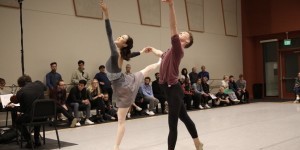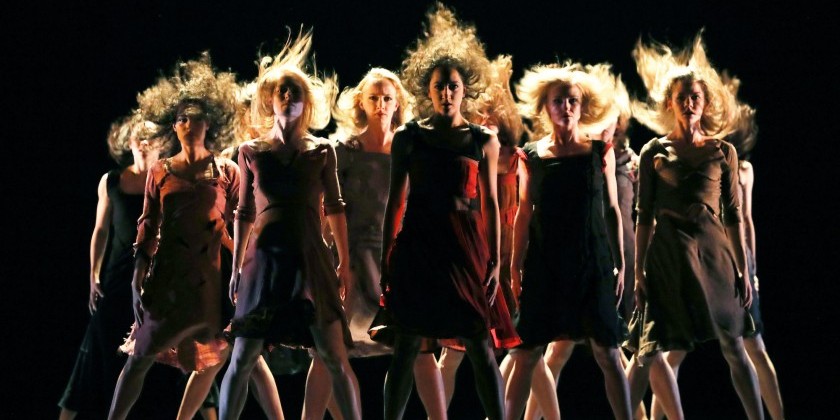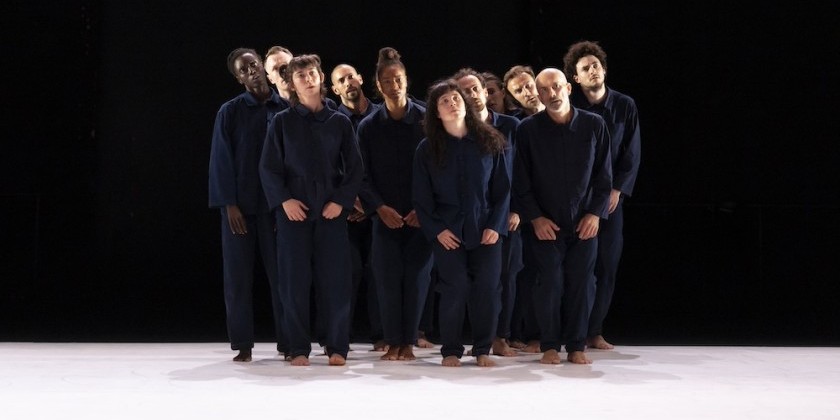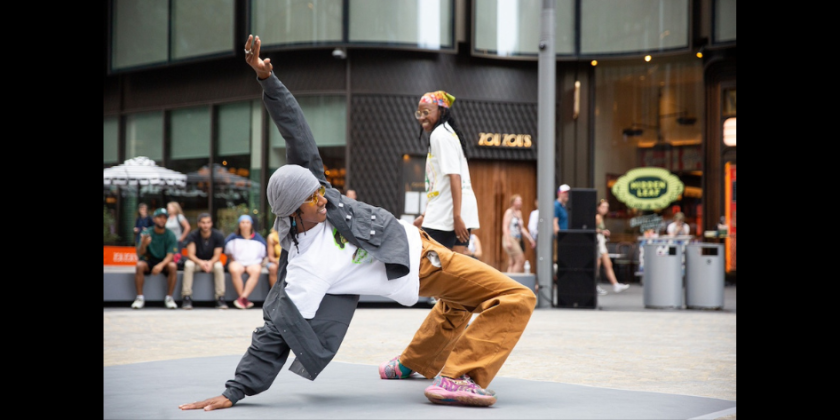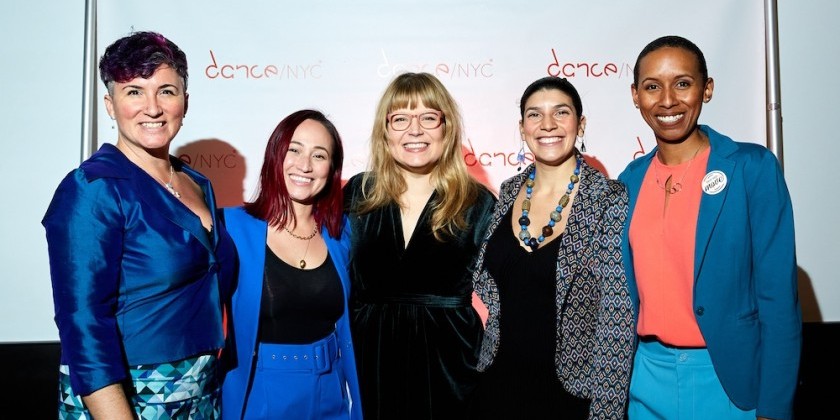Impressions of: Kate Weare’s "Marksman" at The Joyce

Choreography: Kate Weare
Dancers and Creative Collaborators: Julian De Leon, Nicole Diaz, Kayla Farrish, Douglas Gillespie, Thryn Saxon, Ryan Rouland Smith
Original Music and Sound Design: Curtis Robert Macdonald
Set Design: Clifford Ross
Lighting Design: Mike Faba
Costume design: Brooke Cohen
A lone woman (Kayla Farrish), upstage right, walks across the stage, but slowly, as if through honey. Another dancer crouches beneath Farrish, clutching her ankles and propelling her through space. Is Farrish moving of her own volition or is the other dancer forcing her forward? Does she want to be propelled forward? It’s impossible to tell.
Kate Weare’s latest work, presented by The Joyce Theater, explores the willfulness of humans as it intersects with the forces of nature. How much control do we have? How much is out of our control? Marksman exhibits the strength and exposure of the hunt by peeling back layers of modernity to reveal us in our most visceral form — as people versus nature.
Marksman draws from Zen in the Art of Archery, German philosophy professor Eugen Herrigel’s account of learning Japanese bow marksmanship. The piece captivates in its subtle ritual. A constant energy simmers, even in moments of stillness.

Kate Weare Company's Ryan Rouland Smith, Julian De Leon and Nicole Diaz in Marksman by Kate Weare. Photo by Keira Heu-Jwyn Chang.
Weare focuses on the group rather than the individual. There’s an inherent Zen in the way the dancers work together, sculpting precarious structures with their bodies and then watching them disintegrate. A series of trust falls highlights the dancers’ vulnerability and their unshakable faith in each other.
Brooke Cohen clothes the cast in neutral tones and loose, flowing fabric. Open in the back, the costumes bare the ripping muscles of the dancers' backs. The design of the human body is a force of nature.
Clifford Ross strikes a minimalist chord with his set. Two gray columns appear to descend from a photographed image of billowing white clouds, evoking a sense of calm against the dark backdrop, In combination with Mike Faba’s stark lighting, it feels as if peering into another world. The dancers’ shadows bounce off the columns, almost dancing with them.
Curtis Robert Macdonald’s original score is sparse and otherworldly, with an alto saxophone carrying melodic refrains. A combination of sound design, composition and improvisation, it unfurls deliberately, with plenty of space.

The dancers are sometimes obviously human, sometimes not so much. Speedy, crouchy walks thrust them across the stage, insect-like. More often, as if panthers, they retreat and then barrel into space with vigor. The performers, though, are always present and hyper-aware.
In the first address to the audience, Farrish faces outwards, legs spread wide in a grand plié, arms outstretched as though holding the entire world. Her gesture, comforting and maternal, displays her humanity.
Having recently given birth for the first time, Weare had fresh reflections to delve into during the development of this piece. No longer the center of her universe, she celebrates the power of her body as a vessel for the creation of life. Marksman is a birth too, one created by and from her organically, like a breath: the rush of an inhale, the pause at the top with its acknowledgement of potential, and then the relief of an exhale. It’s a mechanism beyond our control, which motivates and sustains — people and nature inextricably intertwined.




